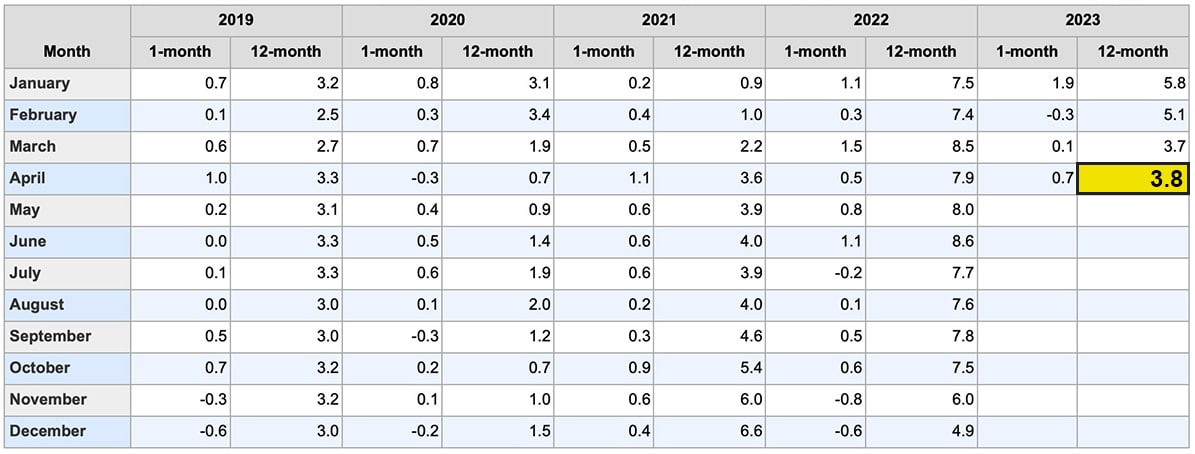How much can a landlord raise rents is a topic that interests landlords and tenants alike: rent control in California. Rent control laws have been a hot topic since the passing of AB 1482 in 2019, which established statewide rent control regulations. However, it seems that many people in the real estate industry are still unaware of the extent of these regulations. So, let’s clear up any confusion and discuss how rent control works in California.
With a population exceeding 40 million people, California accommodates a significant number of renters, constituting half of its total population. Unfortunately, the state has experienced a consistent increase in rent prices over the past two decades, transforming it into one of the most expensive places to reside in the United States. This concerning trend has contributed to a housing crisis, as the supply of housing fails to meet the high demand, compounded by a decline in middle-class job opportunities.
Consequently, the State of California has responded by enacting a series of rent control laws, notably AB-1482, aimed at preserving affordable housing options for low-income and moderate-income households. Notably, California’s implementation of rent control measures and tenant protection laws during the COVID-19 pandemic has played a pivotal role in curbing exorbitant rental price hikes and minimizing mass evictions, setting it apart from many other states.
Rent Control Exemptions
Not all properties are subject to rent control in California. It’s important to know which types of properties are exempt from these regulations. Single-family homes and condominiums, for example, are not subject to rent control. This means that landlords can generally raise the rent on these properties as much as they want. Additionally, if you own a duplex and live in one of the units, the other unit is also exempt from rent control. New constructions within the last 15 years are also exempt.
Rent Control Regulations
For properties that are subject to rent control, the regulations set a maximum allowable rent increase. Under AB 1482, landlords can raise the rent by 5% plus the Consumer Price Index (CPI). The CPI reflects inflation and is calculated based on various factors such as utilities, food, and gas prices. The CPI for each area is released monthly, and landlords are required to use the CPI for the month of April to determine the allowable rent increase.
According to the CPI table, using the 12-month data, the April CPI is 3.8%. We add this 3.8% to the initial 5%, resulting in a total of 8.8%.
Table A. Los Angeles-Long Beach-Anaheim, CA, CPI-U 1-month and 12-month percent changes, all items indexed, not seasonally adjusted.

We use the CPI provided by the U.S. Bureau of Labor Statistics, specifically for the Los Angeles area. You can find the CPI information for the Los Angeles area here: https://www.bls.gov/regions/west/news-release/consumerpriceindex_losangeles.htm
Please note that not all regions release the April CPI. Therefore, we recommend consulting with your local apartment association to determine the appropriate CPI and which month they suggest using.”
The maximum allowable rent increase currently stands at 8.8% for the period from 2023 to 2024. Please note that there is no minimum requirement. If a landlord chooses to increase the rent by only 3%, they have the right to do so.
Impact on Tenants and Landlords
Tenants should be aware of their rights and monitor the rent increases to ensure they are in compliance with the law. If a landlord raises the rent beyond the allowable limit, tenants should familiarize themselves with the exemptions that apply to their specific living situation. It’s crucial to know whether your rental falls under rent control regulations or is exempt from them.
Landlords, on the other hand, should stay informed about the latest rent control laws to avoid any legal issues and ensure they are maximizing their rental income. Understanding the rules and restrictions can also help landlords when selling their properties, as investors are often interested in properties with rents at market value. Here is the proofread version of the text:
The higher the income, the higher the value of the property. When investors purchase a building, they are essentially buying the income stream it generates. Properties with higher income tend to sell faster and at higher prices.
Important Note: This calculation of (5% + April CPI) applies to most situations. However certain cities in California, which have had rent control in place before 2020, may have slightly different rent control laws. So we’re also going to show you a step-by-step process on how to figure out the rent control laws in your city or county.
How to Figure Out the Specific Rent Control Laws in Your City or County
The statewide rent control law AB-1482 is really the least strict law that covers the entire state and is the minimum standard. However, many cities and counties within California have already had long-existing rent control ordinances that may be stricter than the state rent control law. There are also many California cities and counties that have decided that the state law isn’t strict enough. Therefore your city or county may be one of these areas in California with stricter rent control ordinances that overpower the state’s own rent control law.
Because of this, it is very important for you to know the specific rent control laws in your city or county. Whether you’re a landlord or tenant, knowing the specific rent control laws will help you learn whether they apply to you or not, and can help you avoid legal troubles.
Here’s the 5-Step-Process:
- Check to see if your county or city has an active rent freeze due to COVID-19.
- Check whether your county or city has extra rent control ordinances. Here’s a helpful article that covers all California cities with extra ordinances.
- Read the ordinance summary carefully so you’re aware of the legalities.
- Determine the CPI for your region. Read this article on how to find the CPI for your area.
- Contact your city or county’s housing department to confirm your information. This chart contains contact information that you’ll need.
What other resources could I use to determine how much landlords can legally raise the rent in California?
The next best resource for tenants or landlords curious about rent increase limits would be local apartment associations. Below is a list of some major apartment associations in California that you can reach out to:
- Apartment Association of Greater Los Angeles
- Apartment Association of Orange County
- California Southern Cities Apartment Association
- NorCal Rental Property Association
- East Bay Rental Housing Association
- San Diego County Apartment Association
- California Apartment Association
Long-Term Strategies For Tenants
For tenants, becoming a homeowner or investing in property can be a long-term strategy to cap their biggest expense. Owning a property with a fixed mortgage rate provides stability and protection against rising rents. While it may not be easy for everyone, exploring the possibility of homeownership or real estate investment can provide financial security in the long run.
Key Takeaways
Below is the summary of key takeaways:
- Rent control applies statewide in California: In 2019, AB 1482 implemented rent control regulations across the entire state. This means that whether you’re in Los Angeles, San Francisco, or any other part of California, rent control regulations are in effect.
- Exemptions exist for certain properties: While rent control applies to most properties, there are exemptions that landlords should be aware of. Single-family homes, condominiums, owner-occupied duplexes, and recently constructed properties are typically exempt from rent control regulations.
- Maximum rent increase limits: Under AB 1482, the maximum allowable rent increase is 5% plus the Consumer Price Index (CPI). Landlords need to calculate the CPI for the relevant period and add it to the base 5% increase. The maximum allowable rent increase for a specific year is capped at 10%.
- Tenant rights under rent control: Tenants should familiarize themselves with their rights under rent control regulations. If a landlord raises the rent beyond the allowable limit, tenants have options to address the issue. However, it’s important to understand exemptions and the specific context of the rental situation.
- Considerations for landlords: Landlords need to understand the impact of rent control on property value. Rent control regulations can affect the marketability and potential income of rental properties. It’s important to evaluate the long-term implications and factor them into investment decisions.
- Stay updated on changes: Rent control regulations and exemptions can evolve over time. It’s crucial for landlords and tenants to stay informed about any updates or amendments to the existing laws. This ensures compliance and helps make informed decisions regarding rental properties.
Remember, rents will continue to rise in Southern California, making it essential for tenants to explore long-term strategies such as homeownership or real estate investment. By understanding the rules and taking appropriate action, individuals can gain greater control over their housing expenses and financial future.
Conclusion
Rent control in California is a complex topic that both tenants and landlords should understand to navigate the rental market effectively. While statewide rent control regulations provide some stability, it’s crucial to know the exemptions and limitations that apply to different types of properties. Tenants can protect themselves by staying informed about their rights, while landlords should ensure they comply with the regulations and consider the impact on property value.







